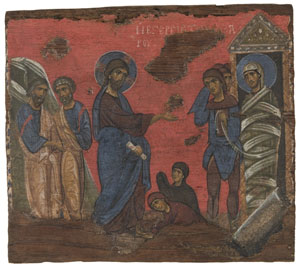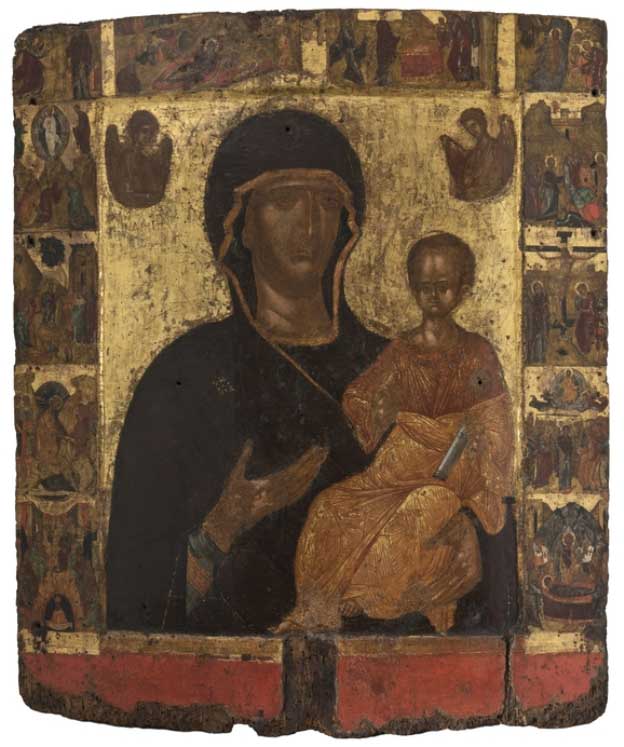From 08 February to 09 April 2017 visitors of the State Tretyakov Gallery can see the selected works of Byzantine Orthodox art of the X-XVI centuries, and also to compare them with nearby exhibits of the Tretyakov gallery, reflecting the Russian Church decoration of the same period. “Masterpieces of Byzantium”, composed of 12 icons, 2 manuscripts and 4 pieces of the orthodox liturgy, are brought from Greece: Byzantine and Christian Museum, the Benaki Museum and the collection Velimezisa E. – H. Margaritis
Byzantine and Christian Museum (Βυζαντινό Χριστιανικό και Μουσείο) is one of the largest national museums of Greece that holds about 25’000 works of early Christian, Byzantine and medieval periods from III to XX centuries B. C. It is located in Athens. It was founded in 1890 by Jorgeson Lambakis, head of the Christian Archaeological society and Secretary to Queen Olga. For first a time it was opened as a Department of the Holy Synod, but in 1914 it became known as the Byzantine and Christian Museum
Benaki Museum (Μουσείο Μπενάκη) was founded by Greek aristocrat from Turkey Antonis Brakesam in 1873, and during the life of the founder it was transferred to the greek state. The collection consists of 40’000 items of Greek history from different periods: from antiquity through the Roman empire to Byzantium, then the Ottoman rule and liberation from it to the modern Greek state.

The exhibition, which completes the year of culture and tourism of Russia and Greece, is a return visit for Orthodox icons. In 2016, the Tretyakov gallery was showing the Greeks its priceless icons “Ascension” by A. Rublev and the collection of icons and sculptures of the XV-XIX centuries at exhibitions in Athens.
Greek “Masterpieces of Byzantium” cover the period since the reign of the Macedonian dynasty to Ottoman rule.
The Macedonian dynasty (867-1057) represented by Palace coups, but also by the circulation period of our ancestors Slavs to Orthodoxy, the invention of the Slavic alphabet by Cyril and Methodius. X century is presented at the exhibition with a silver cross,using during religeous processions

In the period of the following the Byzantine dynasty – Komnenos, ruling with breaks in the XI and XII centuries during the Crusades, the Greek-Russian relations deepen. Exhibit of XII century is the icon of the “Resurrection of Lazarus”, which by writing style is quite similar to Russian culture. The same style is the image of the Vladimir mother of God.
Other exhibits, despite the non-changed in general Church canons, are less significant in our history, but there are no less interesting styles of Greek iconography. So, crusaders in the Byzantine Empire in 1204 activates the communication of Western and Eastern painting schools. Turkish rule moves the centers of Greek icon painting from the Ottoman Empire. With these influences of Greek icon painting takes on new traits. And in Russia, meanwhile, iconography brings a different flavor, flourishing in Moscow, Novgorod, Tver and other centers.




